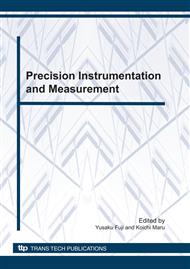p.205
p.210
p.220
p.228
p.233
p.243
p.253
p.263
p.273
A Design Method for Robust Stabilizing Modified Repetitive Controllers for Time-Delay Plants
Abstract:
In this paper, we examine the parameterization of all robust stabilizing modified repetitive controllers for time-delay plants. The modified repetitive control system is a type of servomechanism designed for a periodic reference input. When modified repetitive control design methods are applied to real systems, the influence of uncertainties in the plant must be considered. The stability problem with uncertainty is known as the robust stability problem. Recently, the parameterization of all stabilizing modified repetitive controllers was obtained. Since the parameterization of all stabilizing modified repetitive controllers was obtained, we can express previous study of robust stabilizing modified repetitive controller in a uniform manner and can design a stabilizing modified repetitive controller systematically. However, the parameterization of all robust stabilizing modified repetitive controllers for time-delay plants has not been obtained. In this paper, we clarify the parameterization of all robust stabilizing modified repetitive controllers for time-delay plants.
Info:
Periodical:
Pages:
233-242
Citation:
Online since:
October 2010
Price:
Сopyright:
© 2010 Trans Tech Publications Ltd. All Rights Reserved
Share:
Citation:


